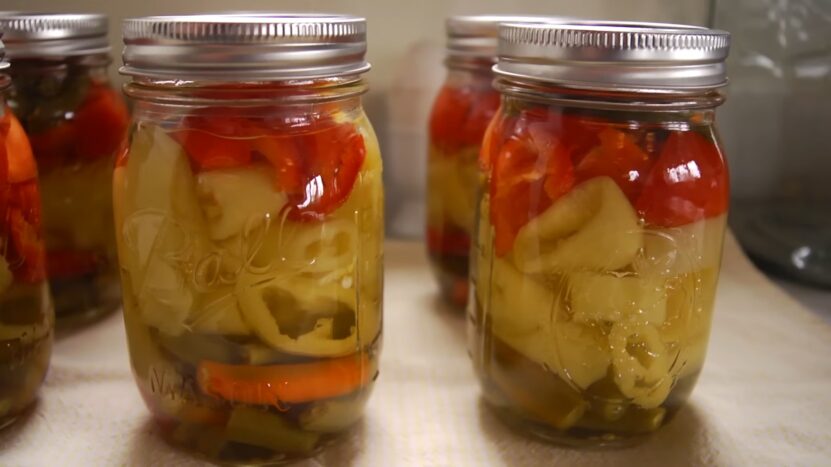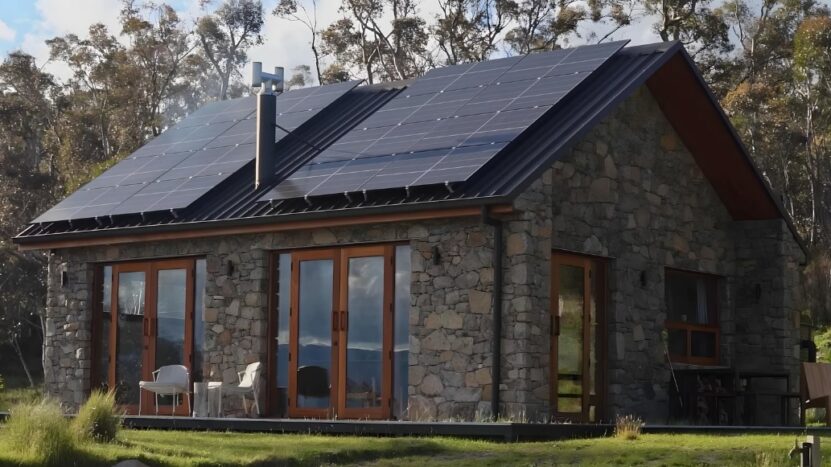Having a reliable stockpile of food can provide peace of mind and security in this world of ours.
By learning a few tried-and-true methods, you can ensure your pantry is always well-stocked with nutritious, delicious options.
That is why I would like to talk about essential food storage methods and show how can you make the most of your grocery haul and be ready for whatever comes your way.
I’ve tested each of these.
6. Freezing

Freezing is one of the oldest and most reliable methods for preserving food.
It works by slowing down the decomposition process through low temperatures, essentially putting the food into a kind of hibernation. Almost anything can be frozen, from fruits and vegetables to meats and baked goods.
The trick is to know how to prepare and package your food properly to maintain its quality and prevent freezer burn.
First, let’s talk packaging.
Airtight is the name of the game here. Use one of the following options to keep out air and moisture:
- Freezer bags
- Heavy-duty aluminum foil
- Vacuum-sealed bags
Label everything with the date, so you can keep track of how long it’s been in there.
Trust me, once things start piling up in your freezer, it’s easy to forget when you put that lasagna in there! Deep freezers, those chest or upright freezers, are ideal for long-term storage because they maintain a consistent low temperature, even when you open them frequently.
Unlike your kitchen freezer, a deep freezer doesn’t share space with an ice maker or gets opened every time you want some ice cream.
One thing to keep in mind is that freezing can change the texture of some foods. For example, raw potatoes and some fruits can become mushy when thawed.
Blanching vegetables before freezing can help preserve their texture and color.
5. Canning

Canning is a fantastic way to preserve fruits, vegetables, soups, and sauces, locking in flavors and nutrients at their peak.
It is a method that involves sealing food in airtight containers and heating them to kill any microorganisms that might spoil the food. The result is delicious, shelf-stable food that can last for years when stored properly.
To start canning, you’ll need some basic equipment: canning jars, lids, a large pot or a pressure canner, and a jar lifter.
The two main types of canning are water bath canning and pressure canning. Water bath canning is perfect for high-acid foods like:
- Fruits
- Pickles
- Tomatoes
While pressure canning is necessary for low-acid foods like meats, beans, and vegetables to ensure they reach a high enough temperature to kill harmful bacteria.
The process begins by preparing your food and filling the jars, leaving some headspace at the top.
Then, you seal the jars with lids and process them in either a boiling water bath or a pressure canner. The heat forces air out of the jars, creating a vacuum seal as they cool, which keeps out bacteria and mold. It’s crucial to follow canning recipes and guidelines closely to ensure food safety.
Improper canning can lead to serious health risks, including botulism. But don’t let that scare you off! With a bit of practice and attention to detail, you’ll be filling your pantry with home-canned goodies in no time.
Plus, there’s something incredibly satisfying about seeing rows of colorful jars in your root cellar that you’ve preserved yourself, ready to be enjoyed whenever you like.
4. Bulk Staple Storage

Storing bulk staples is a fundamental technique for ensuring you always have essential ingredients on hand. By utilizing this method, you can stock up on foods like:
- Wheat
- Corn
- Beans
- Salt
- Powdered milk
- Soybeans.
These staples are versatile, nutritious, and have long shelf lives when stored properly.
The first step is to choose your storage containers wisely.
Food-grade containers, such as Mylar bags, plastic buckets with gamma lids, or glass jars, are excellent choices. These containers protect your staples from moisture, pests, and contaminants. For added protection, consider using oxygen absorbers or nitrogen-packing to extend the shelf life by preventing oxidation and the growth of insects.
Keeping your storage area cool, dark, and dry is crucial. Heat and light can degrade the quality of your food over time, so aim for a consistent temperature below 75°F (24°C) and minimal light exposure. A basement, pantry, or dedicated storage room can work well, as long as it meets these conditions.
Buying in bulk not only saves money but also ensures you have a sufficient supply of essential foods in case of emergencies. Bulk staples can be the backbone of many meals. For instance, you can grind wheat into flour for baking, cook beans, and rice for hearty meals, or use powdered milk in cooking and baking.
Rotating your stock is another key practice. Use the oldest items first and replenish your supplies regularly to ensure everything stays fresh. Labeling containers with dates can help you keep track of what’s been stored the longest.
3. Vacuum Sealing

Vacuum sealing is a popular method for preserving food by removing air from storage bags or containers, thereby preventing oxidation and spoilage.
Using a vacuum sealer is straightforward. You place the food in a specially designed bag, and the sealer removes the air and seals the bag tightly.
The result is a compact, airtight package that protects the food from moisture, air, and contaminants.
For long-term storage, it’s best to use high-quality vacuum sealer bags that are designed to withstand freezing and extended storage. One of the biggest advantages of vacuum sealing is that it significantly extends the shelf life of foods.
For example, vacuum-sealed dried beans, rice, and pasta can last for years, while vacuum-sealed meat can stay fresh for months in the freezer without freezer burn.
Vacuum sealing is great for marinating. By removing air, marinades can penetrate foods more deeply and quickly, enhancing flavor.
When vacuum sealing, it’s important to ensure that the bags are clean and dry, and to leave a bit of extra space at the top for a secure seal. For items with sharp edges, like pasta or nuts, consider double-bagging to prevent punctures.
2. Salting

Salting is one of the oldest food preservation methods, used for centuries to keep meats, fish, and even some vegetables edible for long periods.
To start, you’ll need high-quality, food-grade salt. There are two main types of salting:
- Dry salting
- Brining
Dry salting involves rubbing salt directly onto the food, while brining involves soaking the food in a saltwater solution.
For dry salting, cover the food thoroughly with salt, ensuring all surfaces are coated. This method works well for preserving meats like bacon, ham, and fish. Once salted, the food is typically stored in a cool, dry place, allowing the salt to penetrate and preserve it over time.
Brining, on the other hand, is ideal for larger cuts of meat or whole vegetables.
The food is submerged in a saltwater solution and kept cool, allowing the brine to infuse and preserve it. One of the key considerations when salting food is storage.
Salted foods should be kept in a cool, dry place to maintain their quality. Additionally, it’s important to use the right amount of salt—too little may not effectively preserve the food, while too much can make it overly salty and unpalatable.
Salting not only preserves food but also enhances its flavor.
The process can intensify the natural flavors of meats and fish, making them delicious additions to meals. Plus, salted foods are often quite versatile, and suitable for cooking, baking, or eating as-is.
1. Pickling
Pickling is a delightful method of preserving food that not only extends its shelf life but also adds a burst of tangy flavor.
To start pickling, you’ll need fresh, high-quality produce and other ingredients like:
- Vinegar
- Water
- Salt
- Various spices for flavor
The most common pickled foods include cucumbers, peppers, beans, and carrots, but you can pickle almost any vegetable and even some fruits!
There are two main types of pickling: vinegar pickling and fermentation.
Vinegar pickling involves boiling a mixture of vinegar, water, salt, and spices, then pouring it over the prepared vegetables in sterilized jars. The jars are then sealed and often processed in a boiling water bath to ensure they are airtight.
This method is quick and yields crisp, flavorful pickles. Fermentation, on the other hand, relies on natural bacteria to produce lactic acid, which preserves the food. Vegetables are submerged in a saltwater brine and left to ferment at room temperature for several days to weeks.
When pickling, it’s crucial to maintain proper acidity levels to ensure food safety. Use recipes that specify the correct ratio of vinegar to water, and always use pickling or kosher salt, as table salt can contain additives that may affect the pickling process.
In Conclusion
Mastering long-term food storage techniques can transform the way you manage your pantry and prepare for the future. I believe the options we’ve provided you will help you as they helped me.
Related Posts:
- How to Construct a Root Cellar in Your Backyard -…
- Old-Fashioned Clothing Repair Techniques You Can Use Today
- First Aid Skills Every Outdoor Enthusiast Should…
- How to Create and Sustain Local Food Networks - From…
- Fire-Making Techniques for the Untrained Survivalist…
- Ultimate Guide to Building Basic Furniture:…








